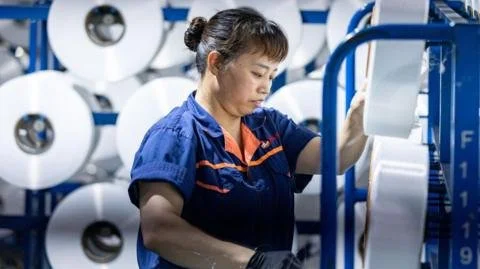China's Economic Resilience Amidst Looming Tariffs: A Surprising 5.2% Growth
Despite the looming tariffs imposed by the Trump administration and ongoing challenges in the property market, China’s economy has showcased surprising resilience, achieving a 5.2% growth in the second quarter of the year compared to the previous year. This figure surpasses the projected 5.1% and indicates a steady, albeit lower, performance from the previous quarter.
The National Bureau of Statistics of China highlighted that the economy managed to withstand various pressures and showed steady improvement due to the measures implemented by the Chinese government to bolster economic activity and a fragile trade truce with the United States. A significant driver behind the growth was the manufacturing sector, which expanded by 6.4%, primarily spurred by heightened demand for emerging technologies including 3D printing, electric vehicles, and industrial robots. Additionally, the services sector encompassing transportation, finance, and technology contributed positively to the economic landscape.
However, challenges persisted as retail sales experienced a slowdown, registering a growth of 4.8% in June compared to 6.4% in May. The real estate industry continued to face difficulties, with new home prices seeing their most significant drop in eight months, reinforcing the ongoing struggles despite various government interventions.
While analysts had anticipated a more pronounced impact from the tariffs, the overall sentiment suggests that China’s economy remains highly resilient. There was a noted surge in exports, likely attributed to businesses attempting to ship goods ahead of potential new tariffs and shifts in China’s export strategy. Looking forward, uncertainties loom for the latter half of the year, and further government stimulus measures might be essential to navigate these challenges, even as the 5% annual growth target appears achievable. Yet, some economists caution about potentially falling short of this target, estimating that a floor of 4% may still be politically acceptable for leaders.

